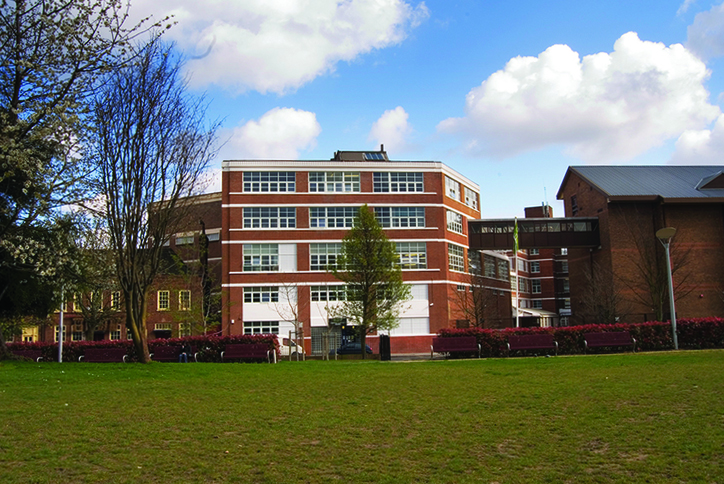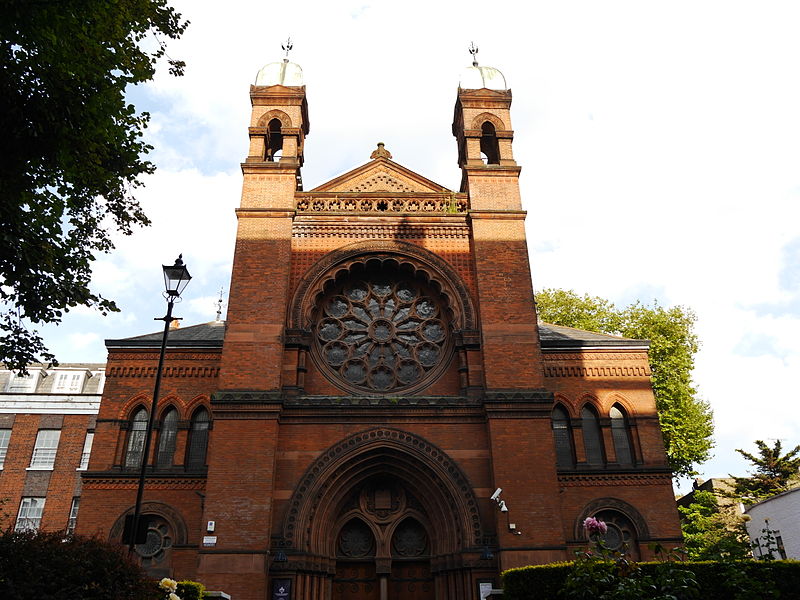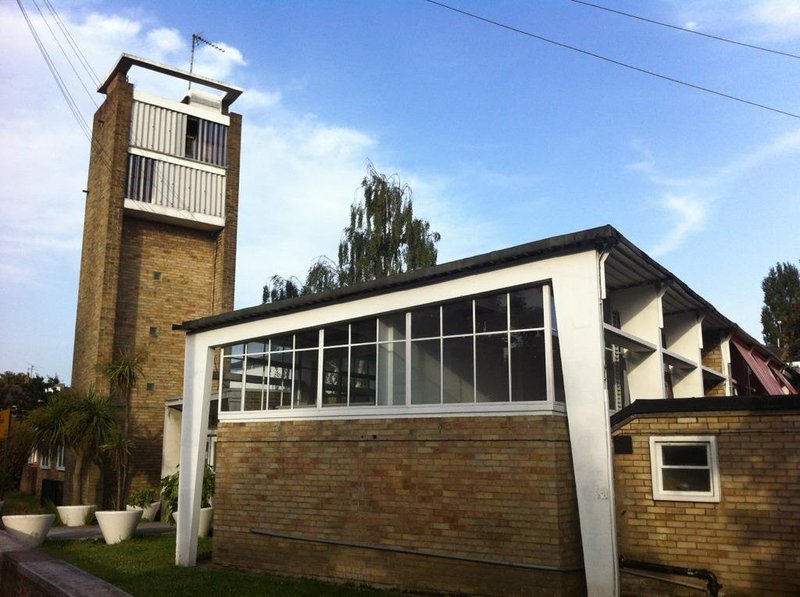Start planning your weekend now with our guide to the significant structures of Jewish interest
Each September one of the most exciting architectural events returns to the capital: Open House London. Across an entire weekend (21-22 September this year) hundreds of homes, offices, historic landmarks, museums and more open their premises to members of the public for absolutely free. Some of these places you can visit throughout the year, but others are only accessible during Open House, and while most you can simply turn up to, others must be book in advance.
Over 800 buildings, walks, talks and tours are available, which means a lot of scrolling to find what you want. So to save you time, we've sifted through the lot to offer a selection of all the hotspots of Jewish interest worth getting a ganders at over the weekend.
CENTRAL
HQS Wellington
Moored on the banks of the Thames in Temple, this former Royal Navy sloop (single-mast ship) not only served during World War II, but helped rescue more than 450 Merchant Navy seamen and shared the credit for sinking a U-boat. Onboard visitors will find a unique collection of ship models, paintings and maritime artefacts.
London Metropolitan Archives
Originally opened in 1938 as a printworks, the LMA building was soon transformed into an air-raid shelter, serving as such from 1939-45. Nowadays it’s a Government archive that’s open to the public all year round. As well as study rooms, there is an exhibition space, which has previous displayed Victorian photographs, Speak Out LGBT, War in London and Picturing Forgotten London.
NORTH
Hampstead Synagogue
Designed by Delissa Joseph, this Romanesque-style synagogue was opened in 1892 as an arm of the United Synagogue. Hampstead's Orthodox community was the first to not have a bimah (central platform) in its architectural design, but during restorations in 2008 a bimah and ground floor seating area for ladies were added.
2 Willow Road
Of all Ernö Goldfinger's modernist designs throughout London, his own home, which overlooks Hampstead Heath, is one of the most (brutally) beautiful. Born into a Jewish family in Budapest at the turn of the 20th century, Goldfinger studied architecture in France after escaping the Communist revolt in Hungary. He moved to London in 1934 with his wife Ursula. Much of the modern art, furniture and belongings of the Goldfinger family remains in situ in their home today.
Highpoint
In 1931, a Russian Jewish architect named Berthold Lubetkin emigrated to London to escape the Soviet Union. His father, sadly, did not and ended up perishing in Auschwitz in 1942. Lubetkin forged a successful career for himself in the UK, with numerous structures to his name throughout London and further afield. He is credited as one of the main forces to bring modernist design to Britain; even Ernö Goldfinger lived at Highpoint before building 2 Willow Road.
NORTH-WEST
Willesden Jewish Cemetery
London's pre-eminent Victorian Jewish cemetery was opened in 1873 and houses 26,000 graves throughout 21 acres, making it one of the largest historic Jewish cemeteries in the UK. Having survived the Victorian and Edwardian eras, two world wars and the post-war suburban boom, Willesden reveals a clear story about the development of the Jewish community in London.
Metroland
Take a walking tour of Stanmore's art deco and modernist homes, from the birth of Metroland on the outskirts of London to the post-war era. See buildings spanning neo-vernacular, brutalist and California modern architecture. Amongst the structures you’ll see 1 & 2 Halsbury Close, built by German-Jewish architect Rudolf Fränkel for himself and his sister, who emigrated to London in the 1930s from Nazi-occupied Berlin.
NORTH-EAST
Sukkat Shalom Reform Synagogue
Formerly a chapel that housed orphans in 1827, this Victorian red-brick was purchased in 1996 by the Reform Jewish community. The organ chamber is now a kitchen, the chancel holds the Torah scrolls and the cross that once topped the building has been replaced with a 4'11" Star of David. However, much of the building has been preserved, including the windows, carvings and Celtic crosses in the brickwork.
SOUTH
Metro Central Heights
Another Ernö Goldfinger offering. This huge modernist structure in Elephant and Castle was built between 1957 and 1967 for the for the Ministry of Health and originally named Alexander Fleming House. In 1997 it was converted into residential dwellings and renamed. You’ll most likely recognise it by the exterior turquoise Vitrolite panelling.
The Crooked Billet
Discover the story of The Crooked Billet pub in Bromley, which was destroyed by a V-2 rocket on Sunday 19 November 1944. The V-2 was the world's first long-range guided ballistic missile, developed in Germany during World War II, and was so fast that you couldn’t hear it coming. Almost 70 years after the tragedy, the pub was rebuilt and a blue plaque stands there today to commemorate the lives of those lost in the bombing.
EAST
Leytonstone & Wanstead Synagogue
Stemming from a minyan started in 1924 at the home of Mr and Mrs Harris Schneider, Leytonstone & Wanstead Synagogue was eventually drawn up by Norman Cohen and opened in 1954. Originally the modest art deco building was a community and youth centre, but by 1964 was consecrated as a synagogue and is one of the few remaining in east London that still hosts regular services.
Balfron Tower
While it looks like the smaller sibling to Trellick Tower, Balfron was in fact completed five years earlier. The 26-storey high-rise has similar qualities to its west London counterpart, which set Ernö Goldfinger apart from other architects of the time. Both blocks have separate service towers that contain the lifts, laundry rooms and rubbish chutes. Both have also featured in numerous movies and music videos.
Bruno Court, The German Hospital
Explore the modernist extension that was added to the German Hospital in 1936 to accommodate more private patients and nurses. The Victorian part of the hospital was opened in 1845 for the German-speaking community of the East End, with German staff. However, during World War II they were arrested and interned on the Isle of Man and replaced by British staff.
Bevis Marks Synagogue
Situated in Aldgate, Bevis Marks is the oldest synagogue in Britain. It was founded in 1701 by Sephardic Jews and constructed in the baroque style by Quaker Joseph Avis. Benjamin Disraeli's grandfather was one of its earliest members. In the early 90s the building was severely damage by terrorist bombing and all donations have since been spent on repairing and renovating the structure.
Sandys Row Synagogue
This Grade II-listed building started life as a Huguenot chapel in 1763, but in 1860 was converted into a synagogue and has been in continuous ever since. In fact, it is the oldest Ashkenazi synagogue in London and the third oldest in the country.
Kingsley Hall
"Kingsley Hall, like World War I, started in 1914," said co-founder Muriel Lester, who built the hall with her sister Doris in honour of their late brother Kingsley. The intention was to give the poor folk of Bow somewhere to attend classes and enjoy social activities for free. During WWII it also served as a bomb shelter. The first bricks were laid by celebrities of the time, including author HG Wells and actor Dame Sybil Thorndike.
Millennium Mills
This art deco behemoth in the Royal Docks was a thriving flour mill from its launch in 1905 to its closure in the 1980s. It even survived a rebuild after an explosion in 1917 that came from the neighbouring munitions factory, which was making explosives for use in World War I. The blast was so powerful that it blew out the windows of the Ritz on the other side of London and could be heard as far away as Norfolk.
WEST
New West End Synagogue
The foundation stone of New West End Synagogue was laid on 7 June 1877 by Mr Leopold de Rothschild in the presence of Chief Rabbi Adler. Today it is still in use and remains one of the oldest working synagogues in the UK. It was designed by George Audsley, who also designed Princes Road Synagogue in Liverpool, and many similarities can be seen between the two.
Rudolf Steiner House
A unique example of expressionist architecture in the city, with a curving, sculptural staircase based on organic plant forms. As the name suggests, this HQ for the British Anthroposophical Society was built in honour of the Austrian architect, philosopher and social reformer Rudolf Steiner. Despite being of no religion, Hitler accused Steiner of being a "tool of the Jews" in the wake of World War I for publicly opposing ethnic segregation. Following the 1923 Beer Hall Putsch in Munich, he was forced to flee to Switzerland.
Trellick Tower
Probably Ernö Goldfinger’s most famous building in the capital. The foreboding, 31-storey, concrete tower block divides opinions, but its pioneering brutalist qualities have earned it Grade II-listed status. It was also the inspiration behind JG Ballard’s 1975 novel High Rise.
Greenside Primary School
The last in our pick of Goldfinger’s masterpieces is an unassuming primary school in Goldhawk Road. Its angular, reinforced concrete frame, infilled with bricks (and accompanying tower) was designed to be built in just 24 days. It was all part of Goldfinger’s plans to bring affordability and quality of life to the public post-war. There is also a Gordon Cullen mural in the foyer.
By Danielle Goldstein
Open House London runs Saturday 21 & Sunday 22 September. Times vary. FREE. https://openhouselondon.open-city.org.uk






















